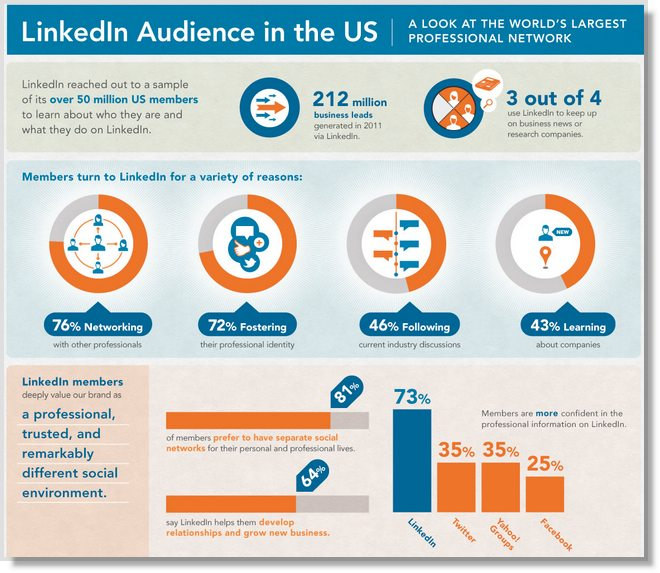You put in the work to create great content; the next question is – where to post it? For most businesses, a company blog, LinkedIn, and Medium are the top contenders.
What are the pros and cons of each platform, and when should you use which one?
Here’s an overview of these options:
Company Blog
With content becoming an indispensable component in many marketing strategies, most companies maintain a blog on their websites.
Here are the pros and cons of publishing on the company blog:
Pros of Company Blog
SEO Ranking
Search engines consider fresh content on a website a signal of relevance, while the backlinks and social shares generated by the content will be counted toward your domain authority.
In addition, the content pieces allow you to get ranked for specific long-tail keywords that you may not have the opportunity to include on your website, so you can increase the chances of getting found on searches.
Brand Awareness and Engagement
When visitors consume an article on your company blog, they’re more likely to engage with your other content.
They’ll become aware of and build affinity with your brand and are more likely to check out your products or services.
Lead Generation Opportunities
With the ability to custom-code your content and install lead capture mechanisms on your platform, you can create more lead-generation opportunities within the content and nurture relationships with your audience.
Cons of a Company Blog
Investment In Resources
You need to invest resources to maintain a blog and create a consistent stream of high-quality content to ensure its success.
If visitors come to your blog and find a “ghost town,” it may do your brand more harm than good.
Hard To Gain Traction
When your site hasn’t accumulated the “SEO juice,” it’s not easy to get ranked high enough to generate traffic with organic search.
You may have to invest in paid advertising to generate traffic and gain traction before organic search becomes a viable way to attract visitors.
When To Use Company Blog?
Posting on the company blog helps you accumulate “SEO juice” so you can eventually reap the benefits of organic search and content creation. It’s an essential component of a well-designed content marketing strategy that helps capture and nurture leads.
LinkedIn Pulse
LinkedIn is a business-focused social media platform that lends credibility to your business persona and provides a great way to connect with potential clients or customers.

Here are the pros and cons of publishing on LinkedIn Pulse:
Pros of Publishing on LinkedIn Pulse
Large Built-In Readership
When you publish an article, all your connections will see it in their feeds. When they “like” or “share” the post, their contact will see it as well.
In addition, you can share your articles in groups to increase exposure further.
SEO Ranking
LinkedIn has a lot of “clout” with the search engines, and all the content on the platform benefits from the domain’s “SEO juice.”
Posting on LinkedIn helps your content get ranked high in search engine results and drive more traffic to your post.
Cons of Publishing on LinkedIn Pulse
Little Control Over Branding
The design option of the platform is quite limited, and you can’t do much to the layout to reflect your branding.
No “Built-In” Lead Generation
You don’t have the option to add any lead generation mechanism (e.g., pop-up, scroll box) to your content, limiting your ability to capture contact information of those interested in your products or services.
However, if you promote the post as “sponsored content” (i.e., paid ad), you can use LinkedIn’s lead gen form to capture leads.
More Distractions
LinkedIn wants users to stay on the platform. Readers will probably be distracted by other features on the site than consuming more of your content or checking out your business.
When To Use LinkedIn Pulse?
LinkedIn Pulse is a great platform to help you get in front of prospects and establish your expert/authority status. With its professional positioning, it’s definitely a platform worth exploring if you’re selling B2B.
Medium
Medium is an online publishing platform that takes user engagement signals into account to recommend content for individual readers.
Here are the pros and cons of using Medium as a publishing platform:
Pros of Using Medium
Large Built-In Audience
Medium has over 60 million monthly readers, and the platform has a robust tagging and categorization system to help content producers reach the relevant audience.
Features That Encourage Engagement
Medium has many social sharing features that are designed to help publishers reach more readers.
Readers can highlight specific quotes and share or comment on them. There are also a variety of social sharing options available to encourage engagement.
SEO Authority
With all the content and social media interactions on the site, Medium generates a lot of backlinks and “SEO juice” under its domain.
Searchmetrics reports that the domain ranks for 319,595 organic keywords, while Moz gives the domain an authority score of 92/100.
The SEO visibility of the domain can help your content rank high in search engine results and generate more traffic.
“Import Content” Feature
This feature automatically generates a canonical tag in the source code, pointing Google to the original source of the content (e.g., on your company blog) so you can avoid being penalized for duplicate content.

Cons of Using Medium
Less Control Over Design
You have to work with the platform’s standardized layout, so it’s harder to express your brand’s visual identity and branding.
No “Built-In” Lead Generation
For many businesses, lead capture is an important part of their content marketing strategy.
With limited ability to custom-code the content, you can’t add a lead generation form on the page. You can still link out to a squeeze page, but it makes for a less seamless user experience.
Limited Analytics Capabilities
Medium has limited analytics features that don’t allow an in-depth understanding of your audience.
You can add Google Analytics if you’re using your own domain, but there are still restrictions on the data you can access.
When To Use Medium?
Medium is great for getting exposure to a larger audience. Leverage this opportunity to link out to your other content and opt-in page to generate leads and continue building relationships with the readers.
Spread Your Content Far and Wide Without Getting Penalized
It’s important to prioritize your business objectives and choose a platform that best meets your goals.
You can also re-publish your content on multiple platforms. Here’s how to make sure you don’t get penalized for duplicate content:
- Identify your website as the original source.
- Adjust the content to suit the audience and the platform.
- Add backlinks to drive traffic to your website.
- Publish a snippet of the article and direct visitors to your website to read the rest.
- Wait two weeks before re-publishing to give Google enough time to index the content.
When you post your content strategically on different platforms, you can increase your reach, grow your audience, and attract more leads.
Editor’s note: This post was written by nDash community member Ling Wong. Ling writes a variety of business articles and website copy on topics such as website and content strategy, B2B marketing, inbound, and more. To learn more about Ling or to have her write for your brand, sign up for nDash today!

